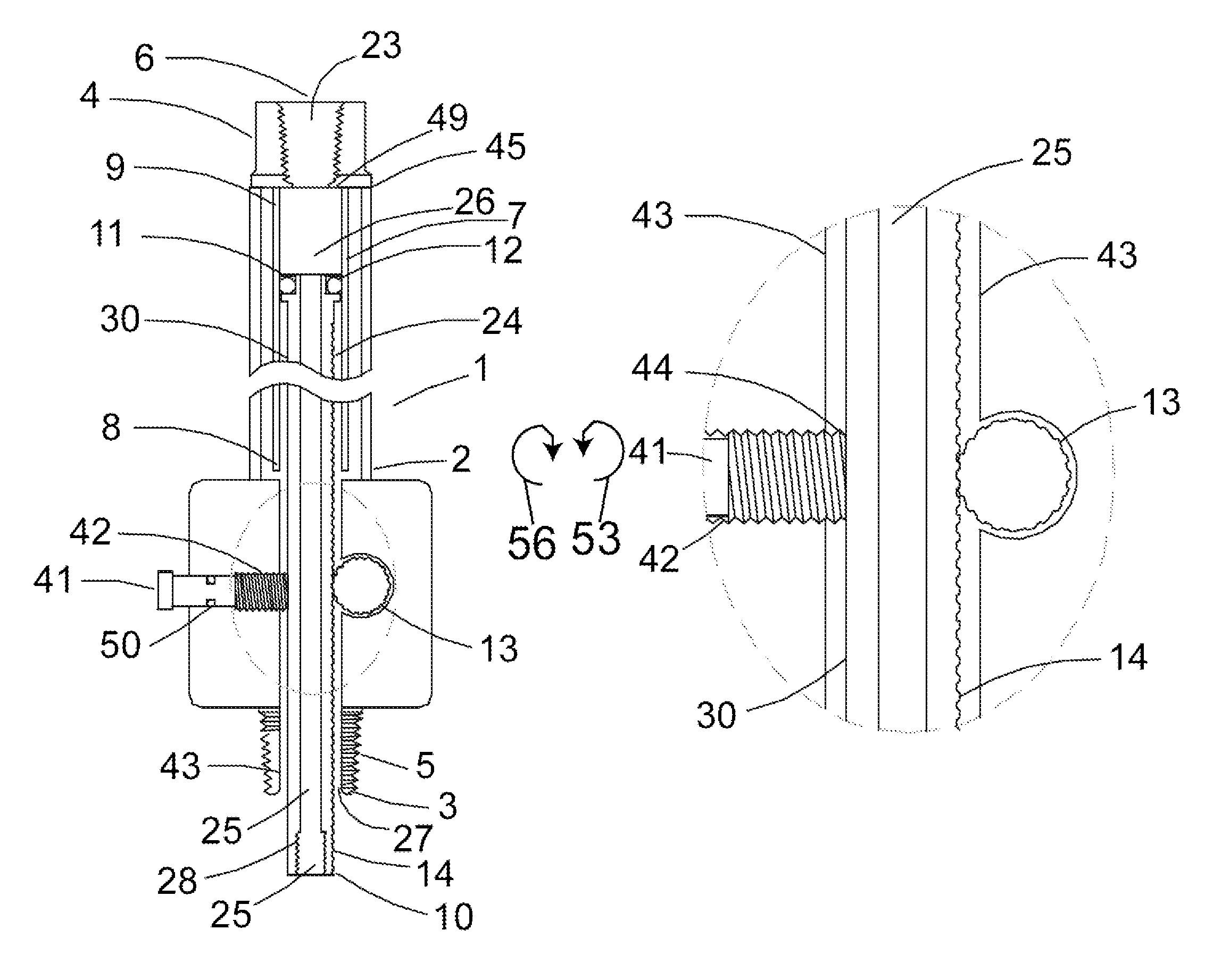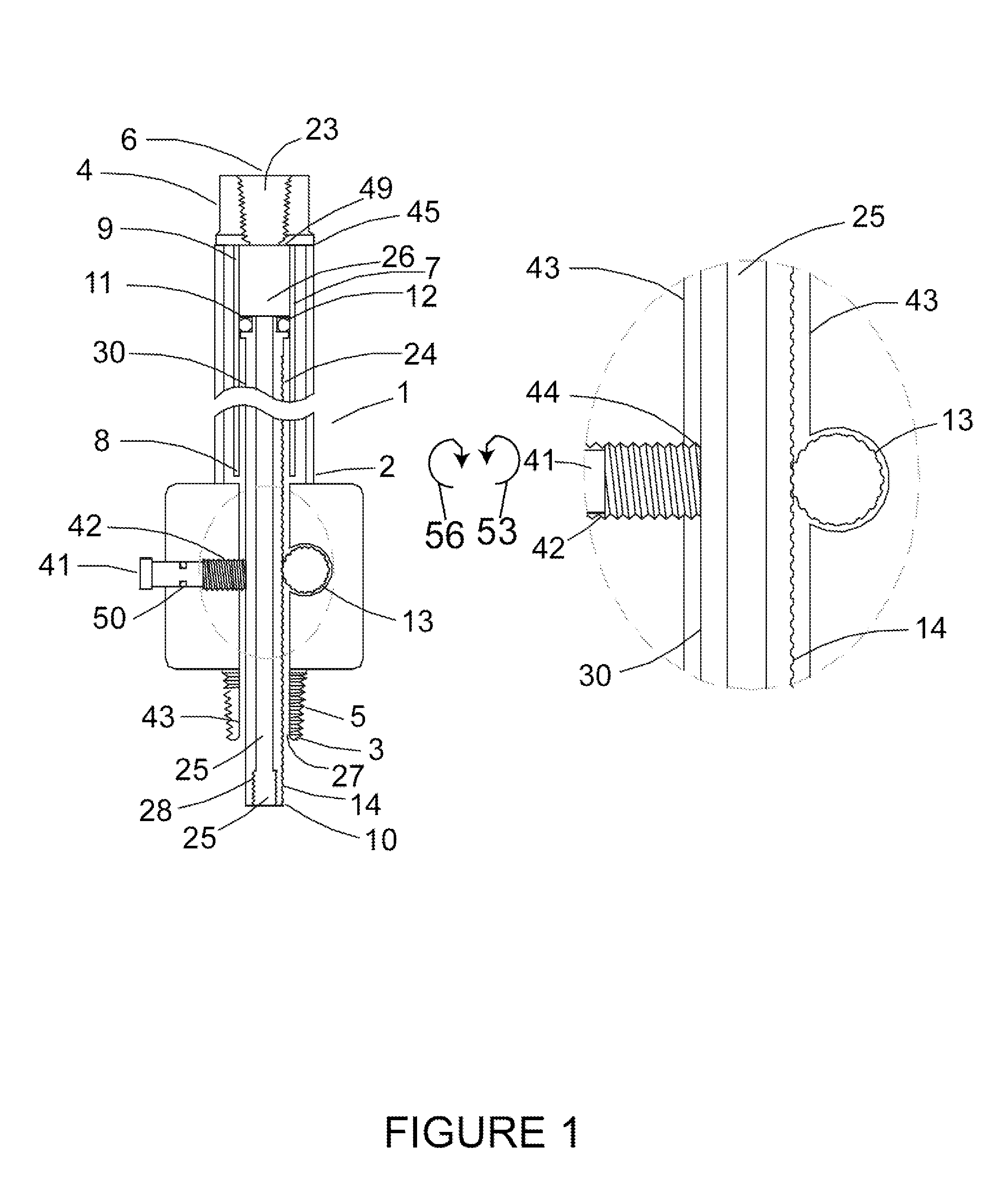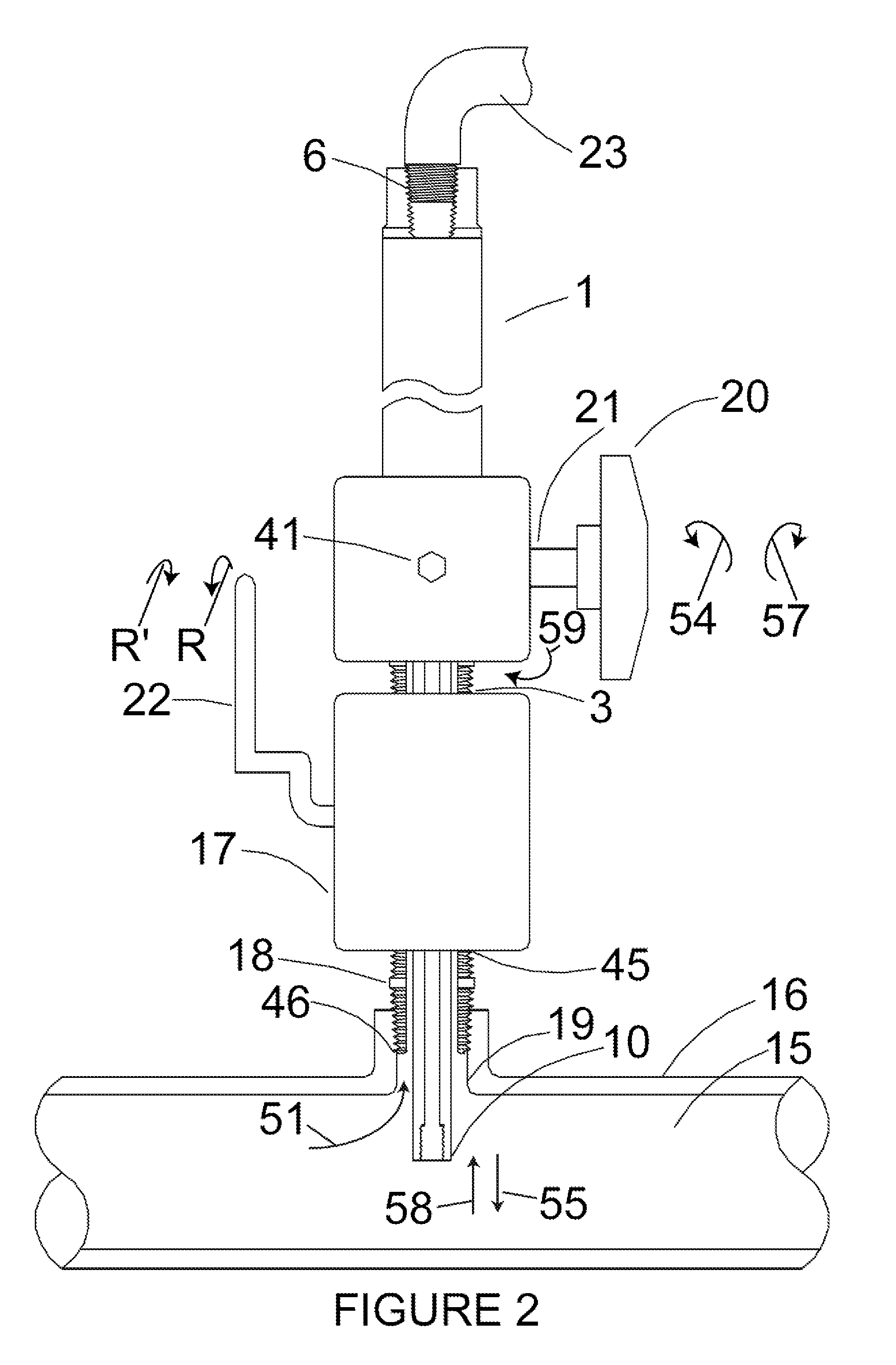Portable insertable probe assembly
a probe and assembly technology, applied in the field of probe insertion, can solve the problems of inconformity with applicable standards, prohibitive cost of installing inconvenient installation of a fixed probe at each sample location, so as to achieve enhanced safety
- Summary
- Abstract
- Description
- Claims
- Application Information
AI Technical Summary
Benefits of technology
Problems solved by technology
Method used
Image
Examples
first embodiment
[0038]Referring to FIGS. 1 and 2, the preferred first embodiment of the invention contemplates a probe housing assembly 1 comprising a probe 30, conduit 7, and housing assembly 2. Cavity A 24, formed within housing assembly 2, extends longitudinally from the first end 3 of housing assembly 2 to the second end 4 of housing assembly 2. Cavity A 24 is formed between the inner wall 43 of housing assembly 2, and is external to conduit 7. Threaded outlet port 6 is formed in the second end 4 of housing assembly 2, and male NPT threads 5 are formed in first end 3 of housing assembly 2.
[0039]The second end 9 of conduit 7 is attached and fluidly sealed to the inner wall 49 of the second end 4 of housing assembly 2. The first end 8 of conduit 7 extends into cavity A 24. Sliding seal 12 is formed on second end 11 of probe 30, said second end 11 of probe 30 being inserted into the open end of first end 8 of conduit 7, said sliding seal 12 providing fluid seal between the outer wall of second end...
fourth embodiment
[0050]In a preferred fourth embodiment of the invention (Refer to FIG. 4) a sensor 31 is attached to threaded opening 28 to passage A25, said sensor 31 having communication cable 32 extending through passage A 25, passage B, and outlet port 6. Operation for extending sensor 31 into pressurized fluid process 15 is essentially the same as for preferred first embodiment.
fifth embodiment
[0051]In a preferred fifth embodiment shown in FIG. 5 attachment plate for corrosion coupon 33 is attached to threaded opening 28 to passage A 25 which can then be inserted into a pressurized fluid process 15 in a manner similar to that described for first preferred embodiment.
[0052]In a sixth preferred embodiment (Refer to FIG. 6) a closed end cap 34 having a finned outer surface 40 is attached to threaded opening 28 to passage A 25 which effectively seals off said threaded opening 28 to passage A.
[0053]Thus, a well is formed, comprised of closed end cap well 35, passage A 25, passage B 26, and threaded outlet port 6. A temperature sensor 36 or other similar object can now be lowered (at its first end 38) into the closed end cap well 35, which remains open to the atmosphere even when probe 30 is extended into pressurized fluid process 15. A temperature sensor cable 48 relays the signal from the probe at the second end 39 of the temperature sensor 36. Operation of this sixth preferr...
PUM
| Property | Measurement | Unit |
|---|---|---|
| length | aaaaa | aaaaa |
| pressure | aaaaa | aaaaa |
| atmospheric pressure | aaaaa | aaaaa |
Abstract
Description
Claims
Application Information
 Login to View More
Login to View More - R&D
- Intellectual Property
- Life Sciences
- Materials
- Tech Scout
- Unparalleled Data Quality
- Higher Quality Content
- 60% Fewer Hallucinations
Browse by: Latest US Patents, China's latest patents, Technical Efficacy Thesaurus, Application Domain, Technology Topic, Popular Technical Reports.
© 2025 PatSnap. All rights reserved.Legal|Privacy policy|Modern Slavery Act Transparency Statement|Sitemap|About US| Contact US: help@patsnap.com



